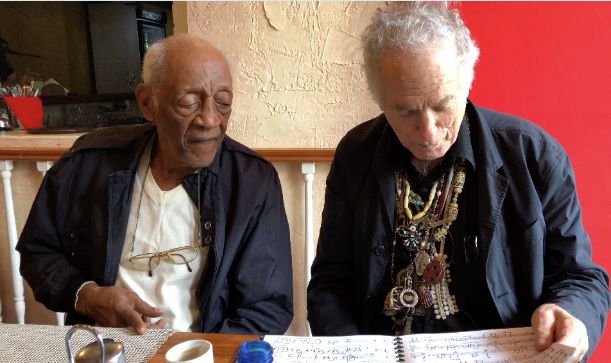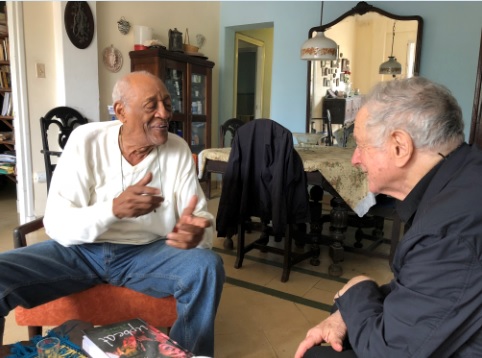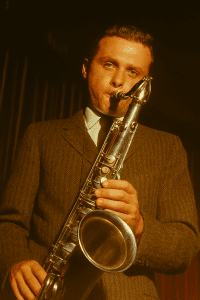Blog, Cuba, Cuban Jazz, Video and audio
Released by the Cuban National Film Institute in 1964
There’s a myth in some people’s mind that Cuban jazz began with musicians like Chucho Valdes and Arturo Sandoval.
With all due respect to those gentlemen, no.
The show starts at the 00:35 point after a brief piano prelude and then a second group comes on at 5:30. This music is from the early 1960s
The tune is “Gandinga, Mondongo y Sandunga” written by Frank Emillio.
Personnel
Frank Emilio, piano
Guillermo Barreto, drums
Tata Güines, congas
Orlando “Papito” Hernández, bass
Gustavo Tamayo, güiro
Hot enough for you?
The group is described as “Quinteto Instrumental de Musica Moderna.”
The film segues into another piece that features the dancer Ana Glorioa and Milacho Rivero’s percussion group
Released in 1964 by the Cuban National Film Institute which was formed in 1959.
I’ve been told, and I have no reason to doubt it, that the Cuban government frowned on jazz in the 60s and 70s. If that’s true, how do we explain this film which clearly celebrates jazz?
Here are many of the same gentlemen – about 20 years later – playing under the name “Los Amigos”
– Ken McCarthy
Jazz on the Tube
P.S. Our unique programming is made possible by help from people like you. Learn how you can contribute to our efforts here: Support Jazz on the Tube
Thanks.
Go to Cuba with Jazz on the Tube as your guide:
Click here for details
Afro-Cuban culture, Blog, Cuba, Cuban Jazz, Video and audio
Filmed June 1, 2013 at Yoshi’s Jazz Club in San Francisco
The jam (“descarga”) is based on Cachao’s “Las Boinas.”
The Cuba-based band Havana D´Primera is led by Cienfuegos-born trumpet player Alexander Abreu.
Back home, this very popular band is known for its “Timba” music, a combination of salsa, American funk/R&B, and the strong influence of Afro-Cuban folkloric music.
Sabrosa.
Personnel:
Alexander Abreu – leader, vocals, trumpet
Tony Rodríguez – piano
Avis Tobías – bass
Harold Díaz Escobar – teclado
Keisel Jiménez – drums/percussion
Guillermo del Toro Varela – drums/percussion
Mauricio Gutiérrez Upman – drums/percussion
Amaury Pérez Rodríguez – trombone
Jannier Rodríguez – coro
Enrique Luis Pérez – coro
Rogelio Nápoles – guitar
Uyuni Martínez Romero – trumpet
Orlando Jesús Vázquez – trumpet
Angel Batule – sound engineer
– Ken McCarthy
Jazz on the Tube
P.S. Our unique programming is made possible by help from people like you. Learn how you can contribute to our efforts here: Support Jazz on the Tube
Thanks.
Go to Cuba with Jazz on the Tube as your guide:
Click here for details
Afro-Cuban culture, Blog, Cuba, Cuban Jazz, Video and audio
I think Dizzy would have loved this band and this version of the classic he wrote with Chano Pozo.
Chicas de la Habana are, well, chicas de la Habana, young women from Havana.
They’re currently based in Madrid, Spain.
As is the case for so many outstanding Cuban musicians, it’s not easy finding information about them, but their music speaks for itself.
Great news!
You can now watch this video – and all Spanish language videos – with English subtitles. It’s free!
Click here for instructions on how to turn on English subtitles.
– Ken McCarthy
Jazz on the Tube
P.S. Our unique programming is made possible by help from people like you. Learn how you can contribute to our efforts here: Support Jazz on the Tube
Thanks.
Afro-Cuban culture, Blog, Cuba, Cuban Jazz, The Cuba-US connection, Travel to Cuba, Video and audio
You’ve got to hand it to Harvard. They’ve got money and in this case they knew how to spend it.
This short video is an excellent musical and visual survey of some of the best that the western part of Cuba has to offer music lovers.
Cuban saxophonist, percussionist and composer Yosvany Terry directs the jazz bands at Harvard where he is also a Visiting Senior Lecturer on Music.
He arranged to bring the school’s jazz band and other students to Cuba for a nine day tour.
They hit all the hot spots: Güines, the home of the birthplace of percussion genius Tata Güines; Mantanzas, where they heard the danzon group Orquesta Típica Miguel Failde and the rumba super group Los Muñequitos de Matanzas; and Havana where they met and played with Cuba jazz patriarch Bobby Carcassés, chekeré master Don Pancho Terry, trumpeter Julito Padrón, and bass player Gastón Joya.
They also visited three conservatories in Havana, Guillermo Tomás, Amadeo Roldán, and the National Schools for the Arts (La Ena), something casual tourists can’t do.
Great news!
You can now watch this video – and all Spanish language videos – with English subtitles. It’s free!
Click here for instructions on how to turn on English subtitles.
– Ken McCarthy
Jazz on the Tube
Afro-Cuban culture, Blog, Cuba, Cuban Jazz, Latin Jazz, The Cuba-US connection, Video and audio
In 1985, on his second trip to Havana, Dizzy Gillespie was accompanied by a documentary film crew.
The resulting film “A Night in Havana: Dizzy Gillespie in Cuba” captures Dizzy’s spirit like few other films.
The film includes beautifully shot concert footage of his performance at Havana’s Fifth International Jazz Festival, his adventures touring Havana and his reflections on Afro-Cuban and Afro-American culture.
As everyone knows, Dizzy liked to kid around.
He was also deep and not afraid to speak his mind as the film shows.
Featured musicians include: Nasyry Abdul Al-Khabyyr, drums; Sayyid Abdul Al-Kabir, reeds; Walter Davis, Jr., piano; John G. Lee, bass; Danny ‘Big Black’ Rey, congas; Gonzalo Rubalcaba; piano, and Arturo Sandoval, trumpet.
– Ken McCarthy
Jazz on the Tube
Artist-Educators, Blog, Cuba, Cuban Jazz, The Cuba-US connection, Video and audio
“Keep a green tree in your heart and perhaps a singing bird will come.” – Chinese proverb
 Reunited in Havana with the help of Jazz on the Tube,
Reunited in Havana with the help of Jazz on the Tube,
Cuban drummer and singer Gilberto Valdés (89) and
US composer and instrumentalist David Amram (87)
work through the rhythms of a score together over lunch.Jazz is an art of innovation, but it’s equally an art of memory, history, and tradition.
Gilberto and David know what it was like when there was a free flow of music and musicians between Cuba and the United States and what a positive impact that had on the people and music of both countries.
They also know the jarring effect of having that free flow cut off. (This was David’s first trip back to Cuba in forty one years.)
 At Gilberto’s home, David and Gilberto talk
At Gilberto’s home, David and Gilberto talk
about the fine points of Cuban percussion.Gilberto’s son is in Sao Paulo working as a filmmaker and when he visits he brings his Dad Brazilian instruments like this flute and pandeiro (tamborine.) Gilberto and David took them down off the wall where they were hanging and gave them a try.
At La Zorra and El Cuervo – the club in Havana where you can consistently hear great jazz seven nights a week – David and Orlando “Maraca” Valle on flute jam.
That’s New York’s Robby Ameen sitting in on drums. (If anyone recognizes the other players, please let me know.)
After we’ve paid the light bill and sent out the daily videos, this is an example of some of the the “behind the scenes” work Jazz on the Tube does to help make unique musical things happen in Cuba and elsewhere.
If you’re inclined to pay a voluntary user fee for your daily subscription and access to over 2,500+ classic jazz videos, we can always use the help and guarantee the money will be well used. Support Jazz on the Tube here.
Great news!
You can now watch this video – and all Spanish language videos – with English subtitles. It’s free!
Click here for instructions on how to turn on English subtitles.
– Ken McCarthy
Jazz on the Tube
Go to Cuba with Jazz on the Tube as your guide:
Click here for details




